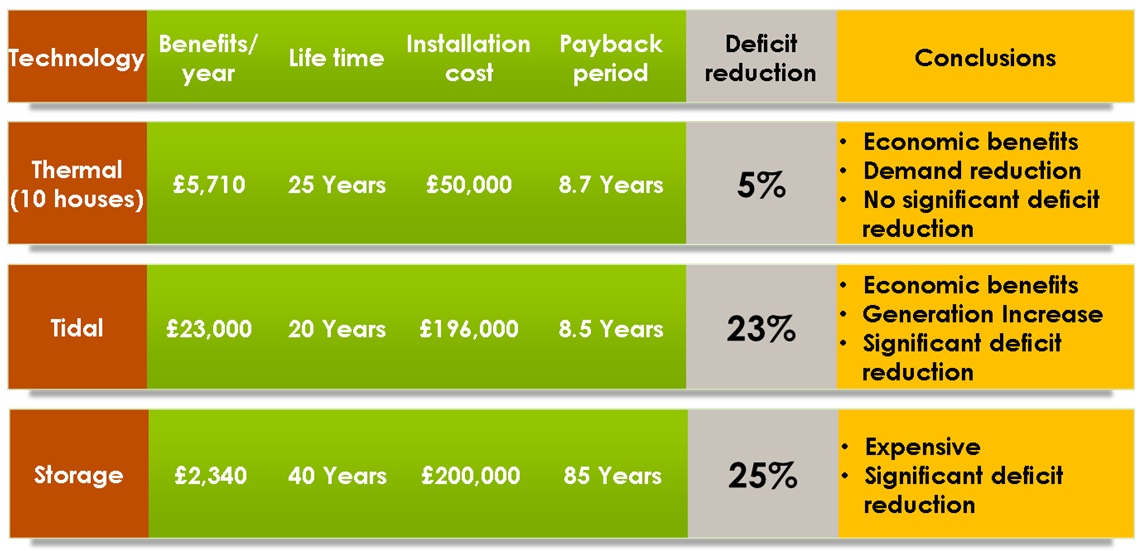Conclusions
This scoping study had looked at 3 ways of improving the energetic situation in the Findhorn Community. It has been seen that there is potential for heating system improvements by shifting the electric load for heating and storing the electric surplus in the form of heat. A situation where 10 houses in the community change from electric immersion heaters to solar panel + electric back-up has been studied.
Due to the particular characteristics of the Findhorn bay, its daily wide tidal range causes strong currents mostly through the inlet area. This makes the bay channel high profitable for tidal stream electricity generation. However, its limited depth, sandy nature and the existence of protected animal species living around, make a challenge the election of the tidal stream device.
In this project, a configuration of 4 vertical axis floating tidal devices has been proposed.The vertical axis turbines and the no-existence of foundation on the seabed makes them very suitable for the area. Moreover, their configuration of variable speed operation allows them to work as much time as possible. A final energy capture of 137 MWh and a capacity coefficient of 0.55 has been calculated.
Finally, the investigation about Compressed Air Energy Storage (CAES) systems shows that this technology may give appreciable efficiency with quite an affordable price, especially compared to other storage systems. The CAES proposed has a capacity of 1200kWh (100kW of electrical output for 12 hours) with a theoretical efficiency of 60%.
With the help of Supply and Demand Match, the effects of each of these modifications were quantified. These results were used to run a Cost Benefit Analysis in order to have a better understanding of the feasibility and economic viability of the systems and improvement proposed. This analysis is summarized below:

In this above figure, it is observed that the electrical energy storage system proposed is not economically viable. However if grants and/or loans are offered to install a storage system, this later can have a great contribution as it can be seen that it reduce the annual deficit by 25%
On the other hand, it can be seen that both thermal improvements and tidal generation have economic benefits. Additionally, Tidal generation offers high reduction of the deficit. This system could therefore be a very interesting project to put forward as it looks technically feasible and economically advantageous.






